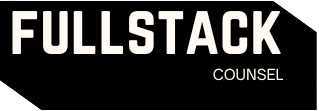Intellectual properties (IP) are intangible assets that provide powerful legal protection of your brands, creations, inventions, and confidential information. You can legally monopolize your business tools, products, and services to build a competitive company in any given industry with a right combination of IP. Many of these IP’s also outlive your life. By securing an IP, you are essentially building a legacy that will live on for generations to power your business.
Even if things go south and your business should fail for unfortunate reasons, just like any other assets, IP may be sold, bought, leased, mortgaged, assigned, and transferred. Depending on your strategy, you can restructure your business model to fully monetize your IP portfolio itself, which can be a highly lucrative business by itself. There are countless ways to expand your business by utilizing your IP. Start building your IP portfolio from day one.
1. Trademarks
A trademark is any word, phrase, symbol, design, or combination of these things that identifies your goods or services. Your company’s name, product’s name, service’s name, logos, and brand names may function as trademarks. Even colors, scents, and sounds may be trademarked, as long as it distinctively identifies the source of goods or services. Trademarks are highly visible assets worth close attention and care.
A strong trademark is an essential component of a powerful brand. A well-developed brand will intuitively echo your company’s core values, build unparalleled loyalty, and compound trust like no other. A powerful brand that resonates in your consumer will become almost irresistible and create powerful loyalty around your household name.
In the US, you become a trademark owner as soon as you start using your trademark with your goods or services in commerce. This is called the “first to use” doctrine. Although you don’t need to register your trademark, in order to enjoy stronger and broader nationwide rights, you must register your trademark with the USPTO.
Different countries have different trademark laws. For instance, in China or South Korea, you must first file your trademark in order to become a trademark owner. Under these “first to file” regimes, use in commerce alone will not provide the trademark protection. Make sure to secure proper trademark protection in your target country before expanding your business overseas.
2. Trade Dress
A trade dress is the look and feel of a product or service that identifies and distinguishes the source of the product or service. Originally including only the packaging or “dressing” of a product, trade dress has been expanded to encompass the “total image and overall appearance” of a product, or the totality of the elements, and may include features such as size, shape, color or color combinations, texture, and graphics. Famous examples of trade dress are Converse shoes (configuration), Coca-Cola bottle (product packaging), and the Christian Louboutin’s red soles (color).
An important exception to trade dress protection is functionality. Functional matter cannot be protected as a trademark or a trade dress. Functionality is “in the province of patent law,” according to the Supreme Court of the United States in Qualitex Co. v. Jacobson Prods. Co., “to encourage invention by granting inventors a monopoly over new product designs or functions for a limited time.”
In a civil action for trade dress dilution, the burden is on the person who asserts trade dress protection to prove that (a) the claimed trade dress is not functional and is famous; and (b) if the claimed trade dress includes any mark or marks registered on the principal register, the unregistered matter, taken as a whole, is famous separate and apart from any fame of such registered marks.
Trade dress will protect your iconic products and deter others from copying your icons.
3. Copyrights
Copyright protects the original expression of an idea in the form of a creative work, but not the idea itself, as soon as an author fixes the work in a tangible form of expression. The copyright is protected for the lifetime of the author + 70 years. A work is fixed when it is captured in a sufficiently permanent medium such that the work can be perceived, reproduced, or communicated for more than a short time.
Copyrightable works include artistic works such a novel, a poem, a photograph, a movie, lyrics to a song, a musical composition, a sound recording, and a painting; computer software and source code therein; and business documents such as marketing plan, business plan, annual reports, business proposals, letters, and emails.
Under 17 U.S. Code Section 106, a copyright owner enjoys the following exclusive rights
- Reproductive right: to reproduce the works in copies or phonorecords;
- Control over derivative works: to prepare derivative works based upon the copyrighted work;
- Distribution: to distribute copies or phonorecords of the copyrighted work to the public by sale or other transfer of ownership, or by rental, lease, or lending;
- Public Performance: in case of literary, musical, dramatic, and choreographic works, pantomimes, and motion pictures and other audiovisual works, to perform the copyrighted work publicly;
- Display rights: to display the copyrighted work publicly; and
- Performance rights: to perform the copyrighted work publicly by means of a digital audio transmission
Many civil law jurisdictions, and in some common law jurisdictions, recognize moral rights. The moral rights include the right of attribution, the right to have the work published anonymously or pseudonymously, and the right to the integrity of the work.
Content powerhouses such as Disney, Netflix, and Warner Bros have created entire empires primarily based on copyrights. Beatles and Michael Jackson still rake in millions of dollars in copyright royalties after their death. You too should start building and utilizing your own copyright portfolio.
4. Patents
A patent is an intellectual property that grants the right to exclude others from using, making, offering for sale, or selling an invention for 20 years in exchange for disclosing the invention. A patent is a powerful asset that legally gives you a monopoly over your new product designs or functions. Here, it’s important noticing that the patents are aimed at protecting new functionality.
In the US, there are 3 types of patents:
- Utility patents: any new and useful process, machine, article of manufacture, or composition of matter, or any new and useful improvement thereof;
- Design patents: new, original, and ornamental design for an article or manufacture; and
- Plant patents: any distinct or new variety of plant
In order for an invention to be patentable, it must be:
- Patentable subject matter
- Novel (i.e., at least some aspect of it must be new)
- Non-obvious (US) or involve an inventive step (EU)
- Useable (US) or be susceptible of industrial application (EU)
Like any other IP’s, patents are territorial. You must file and register your patents in all countries in which you seek exclusive rights. The United States, European Union, South Korea, China, and Japan are so-called the big 5 or “IP5” countries with the 5 largest intellectual property offices in the world.
A patent is a symbolic asset that can function as a qualification of your company’s technology levels, a legal monopolistic right, a powerful leverage in various business negotiations, and a lucrative means to monetize by licensing or selling to others. Once you build a strategic portfolio of patents, it will boost your game to the next level.
5. Trade Secrets
A trade secret is an IP right on confidential information that is used continuously by a business and is not generally known within the industry. A trade secret has 3 parts: (1) information; (2) economic value from not being generally known by others, and (3) reasonable efforts have been taken to protect the trade secret.
According to WIPO, in order to be recognized as a trade secret, the information must be:
- Commercially valuable because it is secret,
- Beknown only to a limited group of persons, and
- Be subject to reasonable steps taken by the rightful holder of the information to keep it secret, including the use of confidentiality agreements for business partner and employees.
In New York, according to NYCBAR, courts look at 6 factors to determine if information should be considered a trade secret:
- The value of the information to your businesses and your competitors
- Whether the information is known outside of your business
- Whether the information is known only to your employees and people in your business
- The amount of money you have spent in developing the information
- The difficulty for others to get or create the information
- The actions you have taken to guard the secrecy of the information
A trade secret is entitled to protection once created for as long as it is kept a secret. If the information is distributed to the public, it is no longer confidential and loses the trade secret protection forever.
If someone steals or uses your trade secret without your permission, or engages in “misappropriation” of your trade secret, you may file an injunction to prevent further disclosure of your trade secret, seek money damages for any financial losses you suffered due to the misappropriation, and recover the profits obtained with your stolen trade secret.
Summary
| Trademark | Trade Dress | Copyright | Patent | Trade Secret | |
| Protects: | Brand Identifier | Look and Feel of product or service | Expression of Ideas | Inventions | Confidential business information |
| Protection Begins: | Upon use in commerce* | Upon use in commerce* | Upon fixation | Upon registration | Upon creation |
| Length of Protection | For as long as in use | For as long as in use | Life + 70 yrs | 20 years (14 yrs for design patents) | For as long as kept secret |
| Registration | Gives extra protection | Gives extra protection | Gives extra protection | Required | N/A |
| Examples | “Coca-Cola” | Coca-Cola bottle | Coca-Cola poster | Method of manufacture | Coca-Cola recipe in the vault |
Bottom Line
You must understand the different types of IP and the unique scopes of their protection. Regardless of size of your business, set up a solid IP strategy to build a powerful IP portfolio to protect your assets and create competitive advantages.

